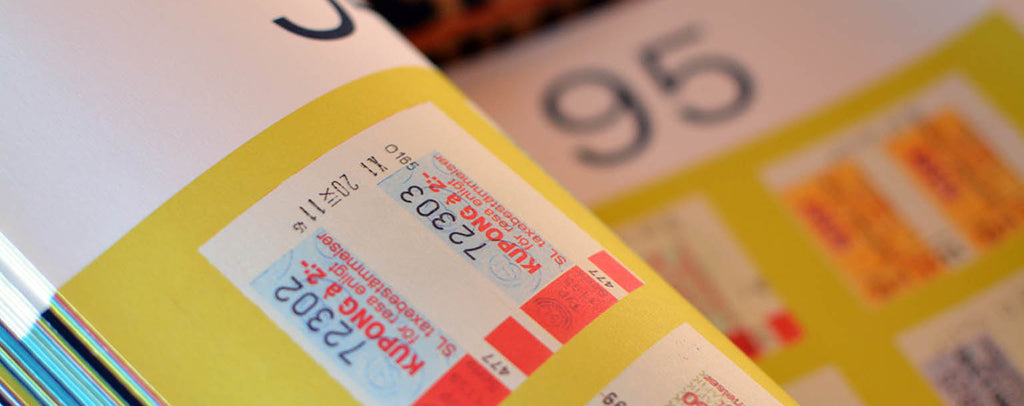In a new series for the Unit site we’re talking to designers about their reading habits; discussing everything from favourite art and design books to which titles get used regularly in the studio, where and when they read, and what they’re reading now.
For our second Q&A we speak to Matt Lamont, designer and director of Out of Place Studio in Bradford and the creator of the popular Design Reviewed archive website which showcases some of his collection of over 3,000 design books, catalogues, journals, posters and other printed ephemera.

What are you reading at the moment? And have you read anything recently you’d recommend?
I currently have a pile of around five books I hope to finish reading in the next two months. I’ve started with One and Many Mirrors: Perspectives on graphic design education published by Occasional Papers.
I’ve always aspired for my archive of printed matter to encourage discourse amongst both students and professionals and this book has provided me with valuable insights into aspects of critical thinking and critical design utilisation in various educational institutions, as well as furthering my design vocabulary and thought process.
I’ve also recently added two publications published by Triest Verlag to my reading pile: Mapping Graphic Design History in Switzerland and Words Form Language: On Concrete Poetry, Typography, and the Work of Eugen Gomringer.

What titles are on your bedside table?
There are three titles currently at the bedside table, for when the little one wakes me up in the early hours. I have the latest Eye magazine, Flexible Visual Systems by the fantastic Martin Lorenz and Josef Albers’ Interaction of Colour, which I am guilty of owning for a few years and still haven’t read.
Where and when do you tend to read? How do books get used in the studio environment?
I struggled over the last two years with taking the time to immerse myself into the printed page, but with a better work/life balance – thanks to our studio team – I tend to read before setting off to the studio and if I have time later in the eventing at around 9pm, with a few biscuits and a pot of tea. I have my notebook on one side and a book on the other, as I tend to write questions or observations that arise during engaging with the content.
The books and printed material in my archive are utilised in numerous ways, depending on the context of the material. Many examples are used for visual research, cues and inspiration, while others are scanned to provide the design history social community with inspiration and topics of discourse – and others for collating content for future publication ideas.

What’s the last visual art/design book you bought?
I’ve recently been collecting/archiving a few design-related books and magazines from Japan, as I have started to document the history of graphic design in the country, from post-war to around the 1980s. I have three of the Ginza Graphic Gallery designer monographs on their way and a couple of issues of the Japanese magazine, Graphic Design (a stunning publication, rich in visual content).
The latest printed material to arrive in the studio is a full set of Typos magazines, issues 1-6, published by Frederick Lambert, when he was teaching at the London College of Printing. I was lucky enough to spot these at a great price and feel my archive lacks a lot of influential printed matter produced in Britain.

Is there a visual art/design book that has had a particular impact on you as a designer more than any other?
There are various books I continually use as both a studio resource, and additional home reading/research. I’m always attracted to books full of visual history, as they can be picked up anytime, opened to a random spread and there is something new.
It’s hard to pick just one, but the three most impactful books would be: The History of Graphic Design Vol 1 (1890-1959) by Jens Müller; Modernism: In Print – Dutch Graphic Design 1917-2017 by Frederike Huygen; and The Visual History of Type: A Visual Survey of 320 Typefaces by Paul McNeil.

Is there a hard-to-find or rare visual art/design title that you’d love to get your hands on?
Max Bill – Form (1952) and Max Huber’s Progetti Grafici 1936-1981 would definitely be on the list. Over the last few years I’ve been slowly ticking off titles I had the desire to find and add to the collection. It’s a list that continues to evolve as my interest outside of graphic design changes, and when reading leads me to new discoveries, designers and curiosities.
Is there a visual art/design book that you would pass on to someone not involved in design?
In terms of ‘book as object’ and a piece of beauty, I am stemmed towards Carouschka’s Tickets by Carouschka Streijffert, a unique artist’s book which contains a collection of sourced travel tickets from around the world. French-folded pages, bound by bolts, it really is a visual treat both from a content perspective and as a tactile piece of design.


What book are you looking forward to reading next?
I have various lectures and workshops booked for this quarter, which I will be delivering alongside agency work. After looking for source materials, I noticed a few gaps in reference and personal knowledge, especially in the areas of ‘counterculture’ and ‘subcultures’.
I'm looking forward to reading Hippie Modernism: The Struggle for Utopia and Rick Poynor’s David King: Designer, Activist, Visual Historian.
The Design Reviewed archive website is at designreviewed.com. It contains a range of articles on the print collection, which is searchable by designer, decade and format, and includes spotlight features on several important publications. See also @DesignReviewed on Twitter and the Graphic Design History group on Facebook.

